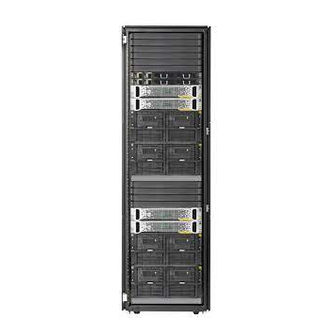
Table of Contents
Advertisement
HPE StoreOnce 6500 and 6600 System
User Guide
For StoreOnce software version 3.18.4
Abstract
This document is the user guide for the Hewlett Packard Enterprise StoreOnce Systems and
is intended for users who install, operate, and maintain the StoreOnce System. Always check
www.hpe.com/info/storeonce/docs for the most current documentation, including localized
versions (PDF) for your product. Refer to the Quick Specs on www.hpe.com/support/
StoreOnceQuickSpecs for supported features for your model.
Part Number: BB897-91023
Published: May 2018
Edition: 6
Advertisement
Table of Contents
Troubleshooting
















Need help?
Do you have a question about the StoreOnce 6500 and is the answer not in the manual?
Questions and answers